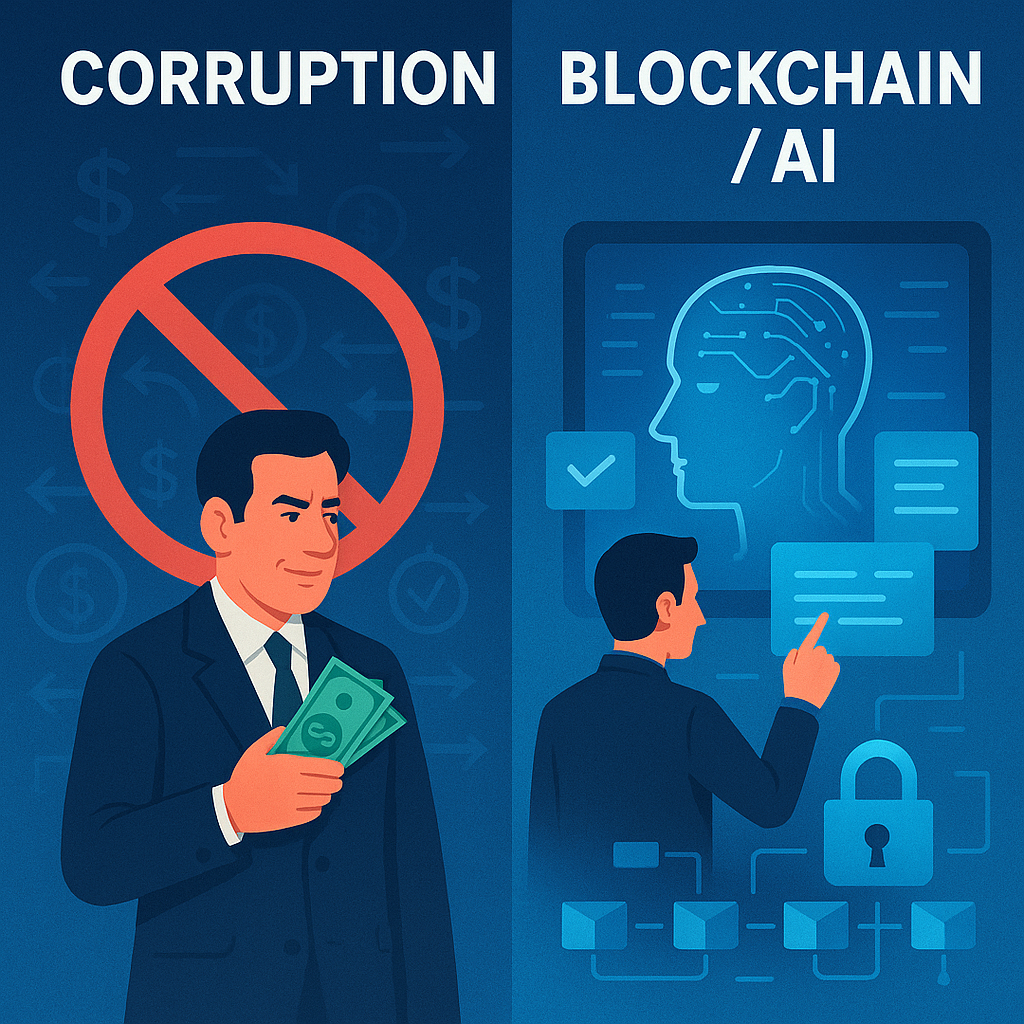How Ndeipi could fix corruption.
Corruption thrives in shadows. It lives in the gaps between systems, in the opacity of paper trails, in the gray zones where money and influence quietly change hands. If you’re serious about getting rid of corruption—not just talking about it, but truly rooting it out—you can’t rely on pledges, policies, or watchdog committees alone. You need infrastructure that makes corruption structurally impossible. That’s where Blockchain and AI come in.
Why Transparency Has to Be Designed, Not Requested
I once worked for one of the largest procurement companies in North America. Procurement is where corruption often hides: inflated bids, backdoor deals, payments to shell companies. The system has loopholes baked in, and people exploit them.
Blockchain would close those loopholes—not by demanding “more transparency,” but by being transparent by design. Every single bid, every payment, every change order, every delivery update could be recorded on-chain. It’s not just an audit trail, it’s an incorruptible ledger. Once something is written there, it can’t be erased or altered.
That means no “lost” invoices, no “special adjustments,” no backroom edits. The ledger itself becomes the referee.
Where AI Fits In
Blockchain is the transparent backbone, but AI is the brain. AI can analyze patterns across thousands of bids, detect anomalies, flag suspicious payments, and highlight inefficiencies instantly.
Think about it: an AI system trained on procurement data could immediately spot when a road contract is suddenly 40% more expensive than the last ten similar projects. Or when the same contractor keeps winning under suspiciously timed bids. Instead of waiting for journalists or auditors years later, corruption gets flagged in real time.
Why This Matters for Development
Corruption doesn’t just skim money off the top—it strangles development. Every dollar stolen is a road that doesn’t get fixed, a teacher who doesn’t get paid, a doctor who leaves the country for better opportunities.
Now imagine a system where that money can’t be siphoned away. Imagine the billions that flow into schools, hospitals, roads, and digital infrastructure because the drain of corruption has been sealed. Nations wouldn’t need endless foreign aid or crushing loans—they could fund their own development with their own money.
Building Institutions That Can’t Be Corrupted
Real development isn’t just about GDP growth; it’s about building strong institutions. And strong institutions are ones that resist capture. Blockchain and AI don’t just help governments—they protect citizens from inefficiency, theft, and mismanagement.
This isn’t science fiction. The technology exists. It’s not about if this system can be built, it’s about when governments and corporations will decide they’ve had enough of corruption as usual.
The future isn’t about better watchdogs—it’s about systems that don’t need watchdogs in the first place.

Leave a Reply